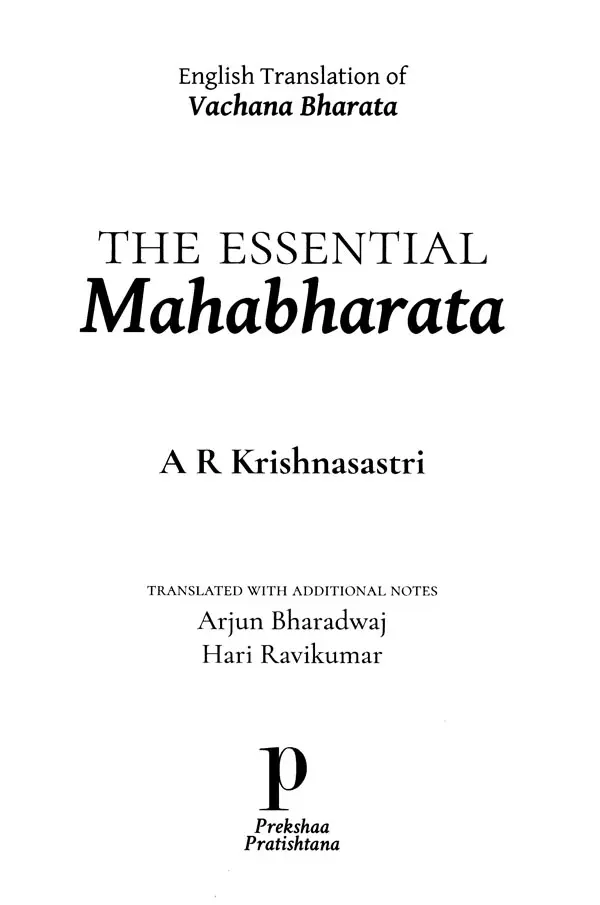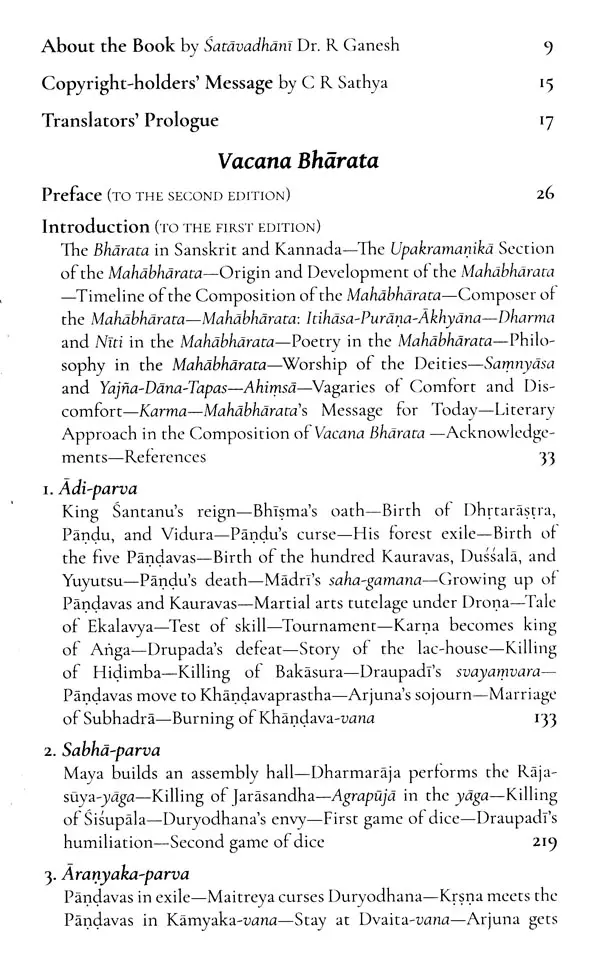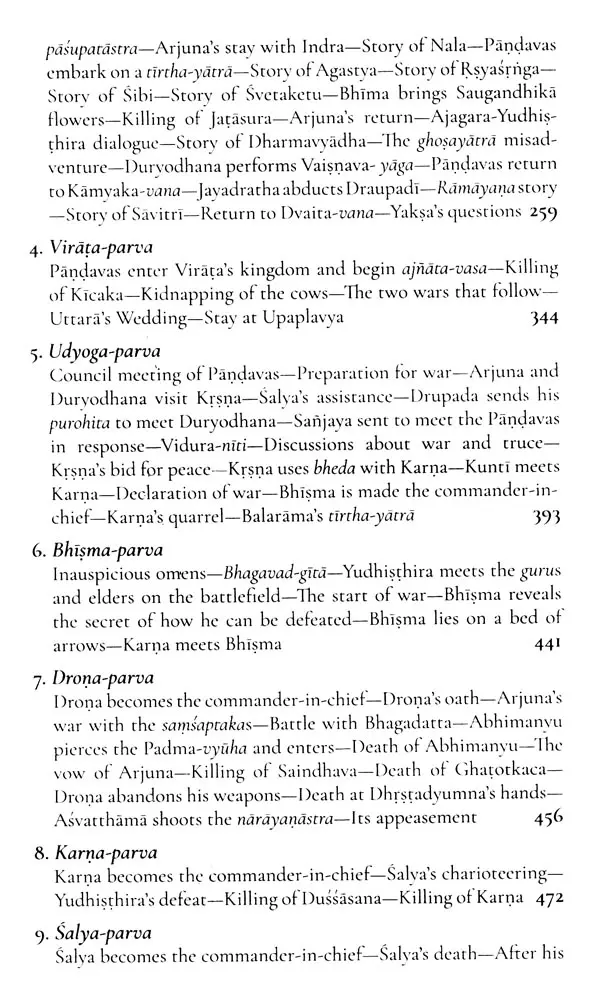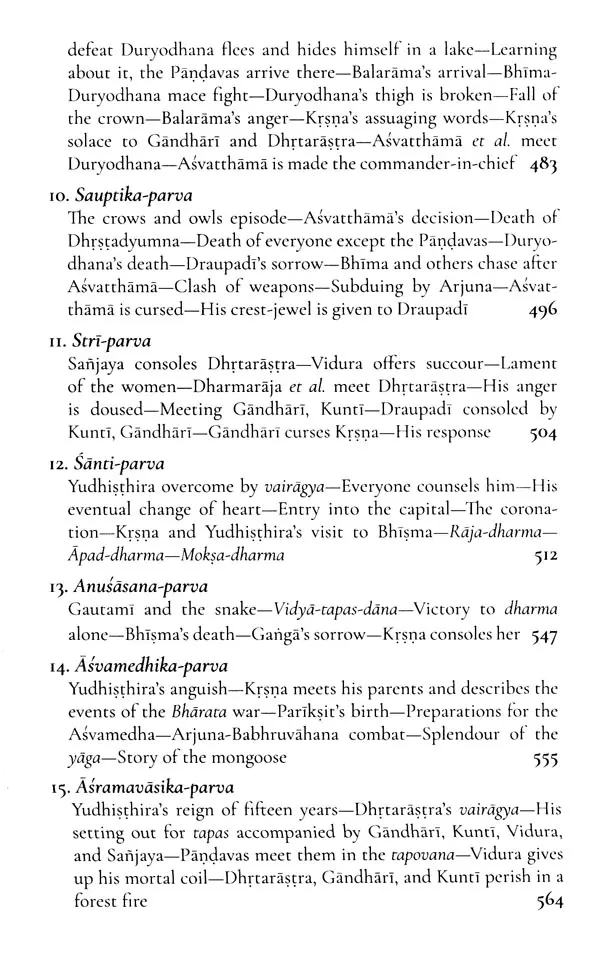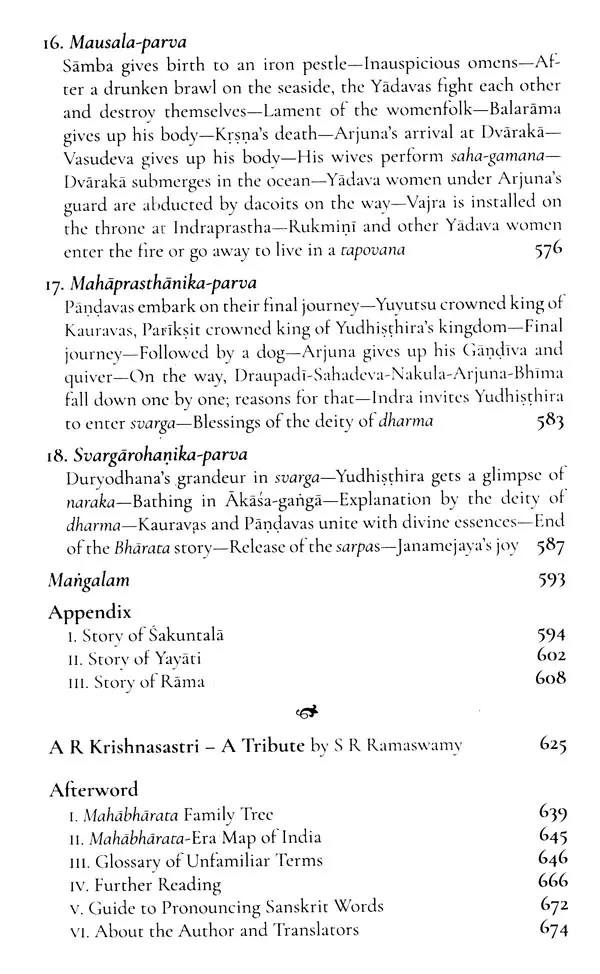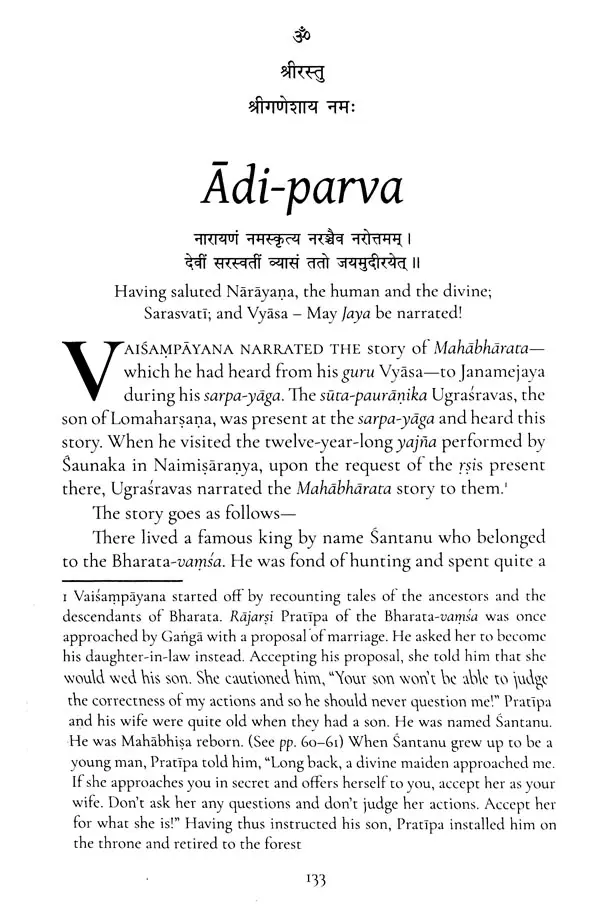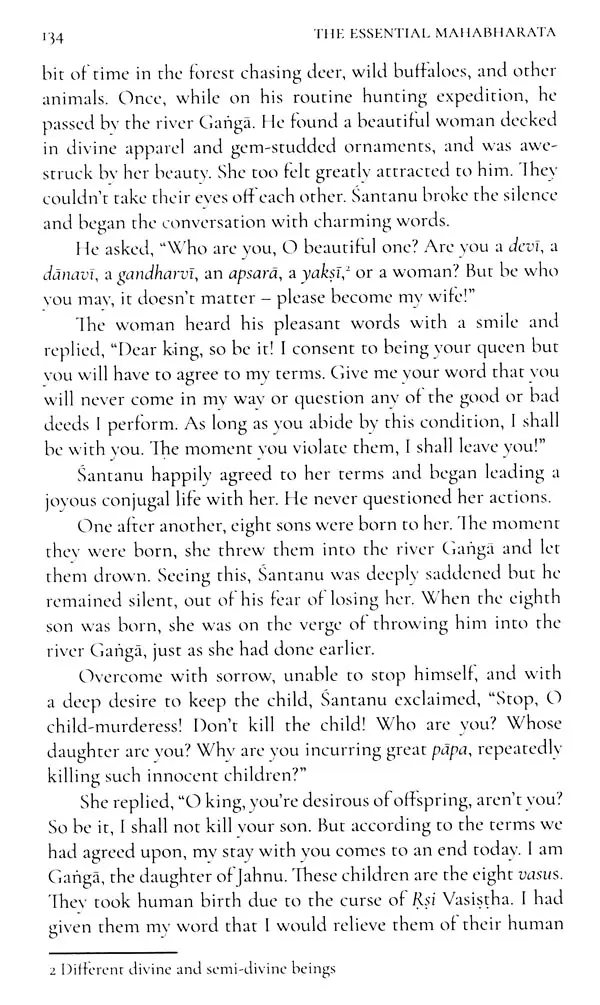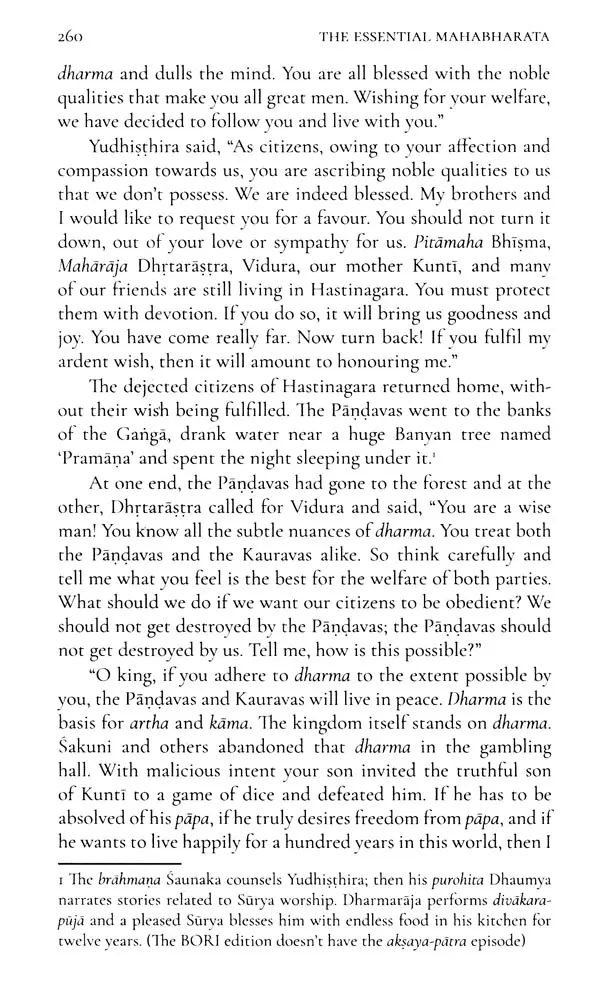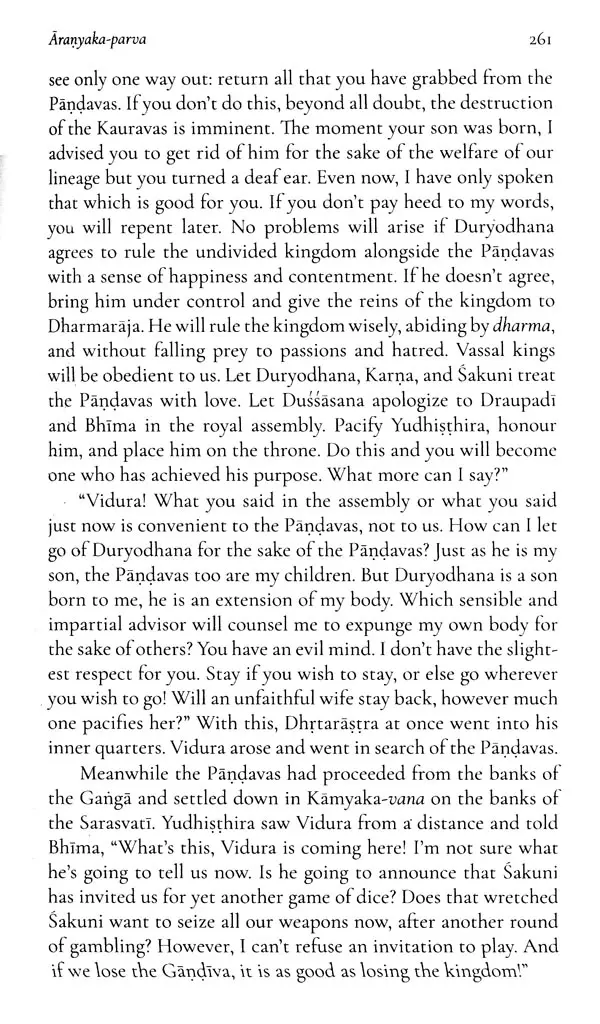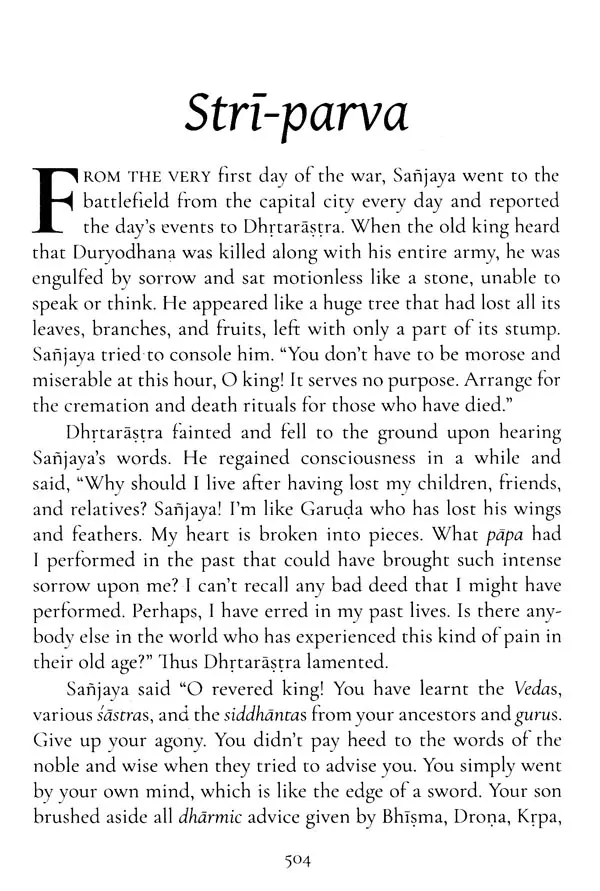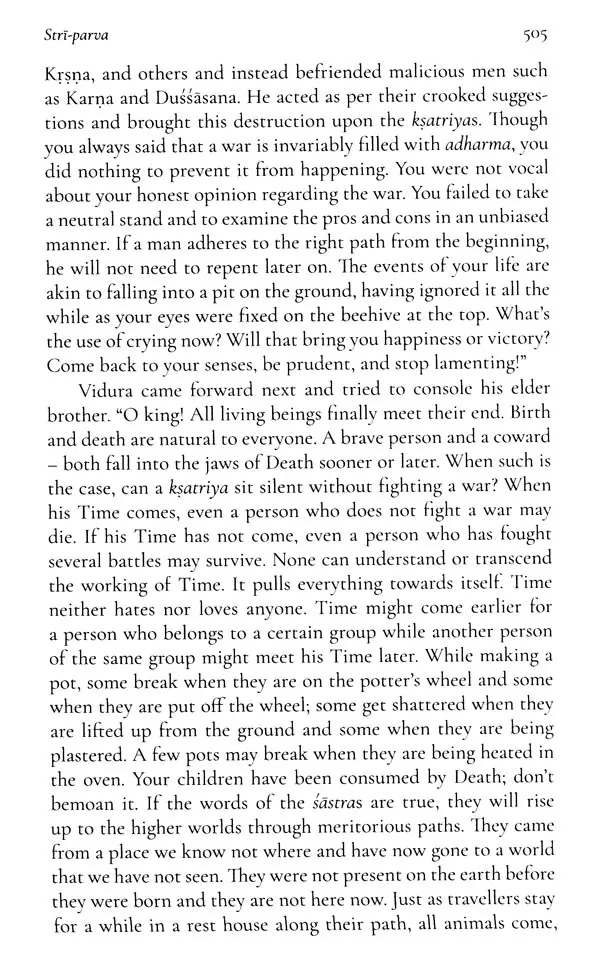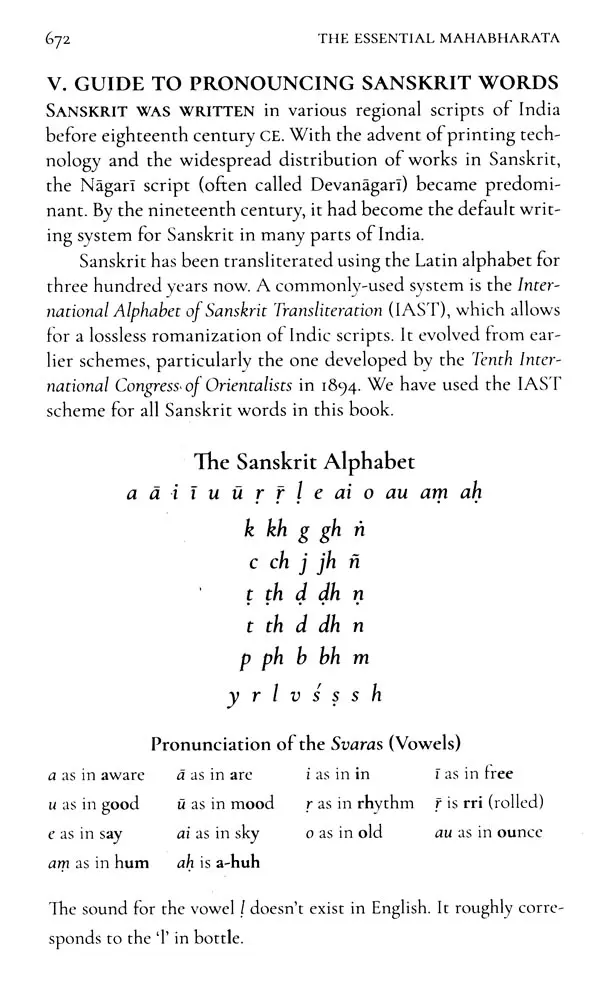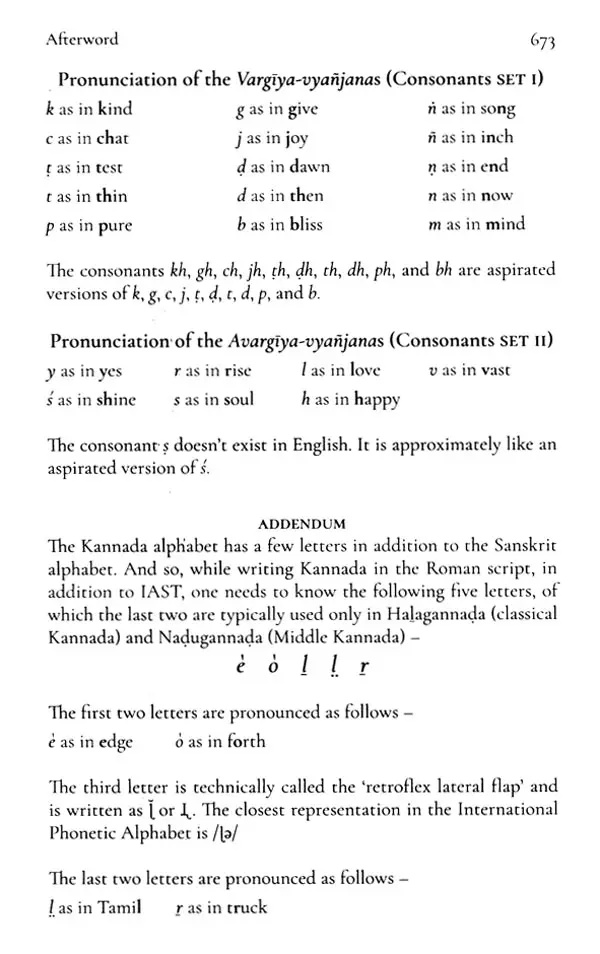
The Essential Mahabharata
Book Specification
| Item Code: | UAJ024 |
| Author: | A.R. Krishna Sastri and Vachana Bharata |
| Publisher: | Prekshaa Pratishtana, Bangalore |
| Language: | English |
| Edition: | 2022 |
| Pages: | 676 |
| Cover: | HARDCOVER |
| Other Details | 9.00 X 6.00 inch |
| Weight | 990 gm |
Book Description
THE COPIES OF the first edition of the Vacana Bharata sold out a few months ago. We have worked on the second edition because it has been observed that there are more people interested in buying the book All those who have read the book and found joy in it have indeed worshipped Vyasa and showered me with their blessings. To all of them, I offer my thanks and my regards.
If one wishes to understand the form of the Mahabharata, one has to read the original Sanskrit work from beginning to end. If not, one must at least read a good translation that has captured every minute detail of the original. I am not under the illusion that one can wholly understand the original Bharatiya by merely reading the Vacana Bharata. If you were to put into your mouth a few carpals or slices of an orange, rich in the cit- rues kernels, you will not get a complete picture of the form of the orange. And apart from the fruit, you will not have even an inkling of the form of an orange tree or the form of a cluster of such trees. The original epic is a veritable forest of many such tree clusters. Many people lack the opportunity, feasibility, or the patience to read through the original. This work has been composed for them. In this treatise, I have primarily adhered to a literary perspective. In literature, acuity (appropriateness, propriety) and samaiuasya (accuracy, consistency) are essential. A certain segment of the work will appeal to a certain taste and time. If we go on adding all those parts, the size of the work and its various segments will become unmanageable. Much of my efforts have been expended in the direction of condensing the epic keeping in mind aucuya and samaajasya.
I gave a copy of the first edition to a renowned Sanskrit . scholar. A keen proponent and ideologue of Vedanta, he at once . said, "My good chap, what sort of Bharata is this, lacking in Vedanta?" Perhaps his feeling was that I should have included the Sanat-suidtiya and Anugita passages - because, as it stands, there is a good deal of Vedanta in the Vacana Bnarasa. In sentiment, in language, and in style, the Sanat-suauiya and Anugita are close to the Upanisads. If they can be likened to the ore that contains gold particles, the Bhagavad-Gita is like 'a necklace made from twenty-four carat gold. If they are like the crude grass, plants, and shrubs that the cow chews and consumes, the cue is like the milk given by the cow that has eaten and digested all that. The author of Bharata fills this milk in crisp verses, which are like silver spoons, and makes us drink to our heart's content.
Those who deem this fit only to be drunk by young children may gladly take up the study of the disorganized and haphazard Sanai-suiaiiya; Anugita, the Upanisads, and so forth. The Crafta contains akin to those other treatises-not just words of tattva (loosely, 'philosophy') but it also instructs us on acara1)-a (the practical aspects of the philosophy, concrete steps to realize the values enshrined in the text).
THE BHA.RATA IN SANSKRIT AND KANNADA 2 THE MAHA.BHA.RATA IS a voluminous work. Together with the Harinama it exceeds a hundred thousand verses. There is no work of this magnitude in world literature. If we put together the Greek epics Iliad and Odyssey, they amount to an eighth of the size of the Mahabharata. Just like India is home to the tallest I Bana-bhatta, the poet of this verse, equate Vyasa to Brahma, the deity of creation. Just like the latter created Bharata-uarsa, the former created the Mahan-Bharata. Brahms's consort is Sarasvati, who is the deity of language. She also flows as the life-giving river Sarasvati that purifies the land of Bharata (India). Similarly, in her manifestation as the divine language, through Vyasa's poetry, she sanctifies the Mahabharata 2 In the Introduction Prof Krishnasastri largely quotes Kannada works and Kannada translations of the epic (the Vacana Bharaia being a Kannada treatise) but he has referred to research material in multiple languages including English and German that were accessible to him back then mountain in the world, the Indian civilization has the grandest epic in the world and we Indians can be justly proud of them. However, akin to the Himalayas, the Mahabharata too has been- come difficult to scale for the common folk. Even those well- versed in Sanskrit will not find it easy to read the epic from cover to cover. This is perhaps the reason for the living tradition of oral retellings of the epic, which span months and years. This was a healthy pastime for people and even the illiterates would gain access to classical culture.
Gifted poets like Kumara-vase', endowed with great bhakti for the Supreme, out of their desire to share the joy to literature with the masses, creatively adapted the Mahabharata into Kan- nada. His Kathata-bharata-mahabharata is one among the golden kalasas that adorns the grand gopura of Kannada literature. How- ever, it is in the form of verses and is composed in Nadugannada (Middle Kannada); the laity has neither the patience nor the skill of language to read it. As for Pampa's Vikramarjuna-vijaya, it is a campfl-kavya4 and ornate in its language; one needs to have deep scholarship in order to savor it. Seeing this predicament Maharaja Krishna raja Woodier IW commissioned the original Sanskrit Mahabharata to be translated into Kannada word-for- word." But this work runs into many huge volumes and is pro- hibitively expensive. And the copies of even these volumes are largely unavailable today.
Book's Contents and Sample Pages
